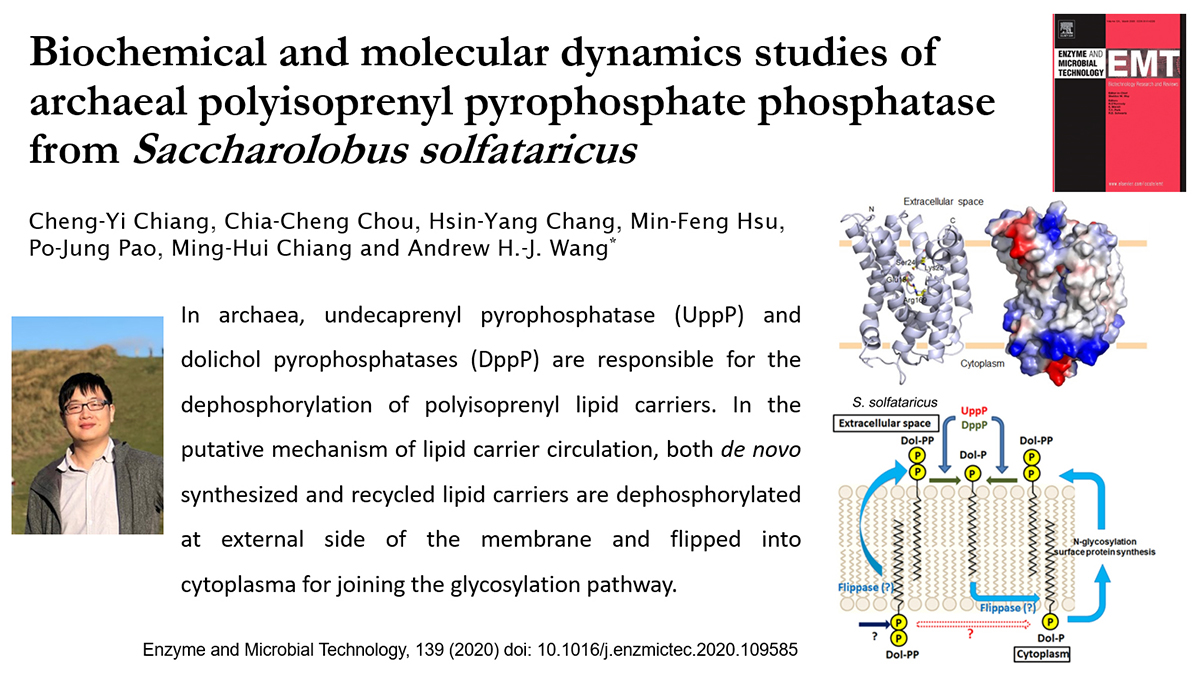
 中央研究院 生物化學研究所
中央研究院 生物化學研究所
The undecaprenyl pyrophosphate phosphatase (UppP) is an integral membrane pyrophosphatase. In bacteria, UppP catalyzes the dephosphorylation of undecaprenyl pyrophosphate (C55-pp) to undecaprenyl phosphate (C55-P) in the periplasmic space, which is an essential step for the isoprenyl lipid carrier to reenter the peptidoglycan synthesis cycle. Besides bacteria, the UppP homologs are widely distributed in archaea genome. However, all archaea lack peptidoglycan structure in their cell wall components, and the major archaeal lipid carriers are dolichol phosphate (Dol-p) and dolichol pyrophosphate (Dol-pp), so the functions of the UppP homolog in archaea remain unclear. Here, we purified a recombinant polyisoprenyl pyrophosphatase of a thermoacidophilic archaeon, Saccharolobus solfataricus (SsUppP), and characterized its enzymatic properties. Two isoprenyl pyrophosphate, farnesyl pyrophosphate (Fpp) and geranylgeranyl pyrophosphate (Ggpp), were used as the surrogate substrates, simulating the bacterial and archaeal lipid carriers. SsUppP dephosphorylated Fpp and Ggpp at 37 °C, but retained the phosphatase activity at high temperatures. The optimal condition for the enzymatic activity was found to be at pH 7 and 70 °C. The thermostability of SsUppP was also supported by molecular dynamics simulation studies. Our results indicated that the archaeal SsUppP can dephosphorylate isoprenyl pyrophosphates at the natural environment of high temperature, and the possibility to catalyze the dephosphorylation of archaeal lipid carriers.
